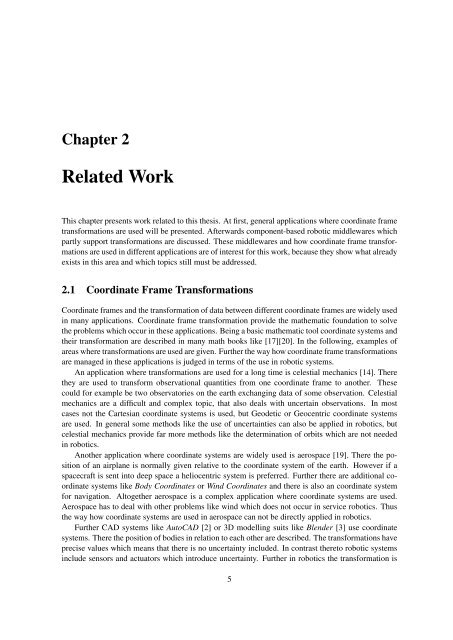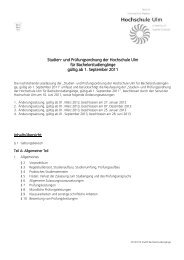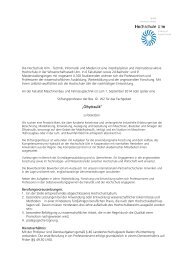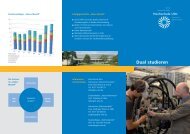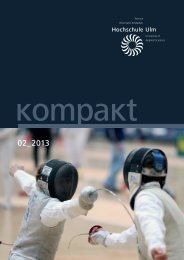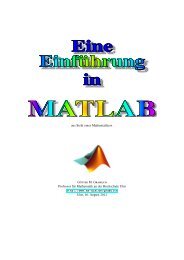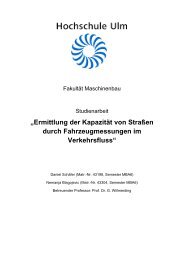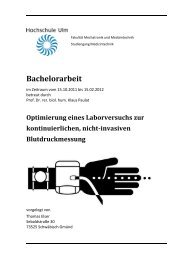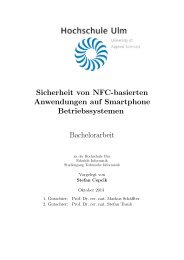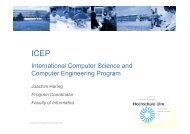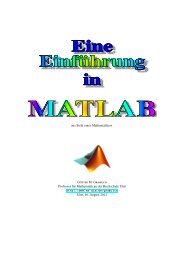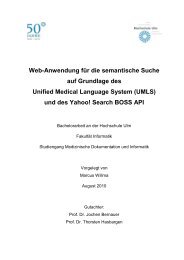PDF 1.938kB
PDF 1.938kB
PDF 1.938kB
Create successful ePaper yourself
Turn your PDF publications into a flip-book with our unique Google optimized e-Paper software.
Chapter 2<br />
Related Work<br />
This chapter presents work related to this thesis. At first, general applications where coordinate frame<br />
transformations are used will be presented. Afterwards component-based robotic middlewares which<br />
partly support transformations are discussed. These middlewares and how coordinate frame transformations<br />
are used in different applications are of interest for this work, because they show what already<br />
exists in this area and which topics still must be addressed.<br />
2.1 Coordinate Frame Transformations<br />
Coordinate frames and the transformation of data between different coordinate frames are widely used<br />
in many applications. Coordinate frame transformation provide the mathematic foundation to solve<br />
the problems which occur in these applications. Being a basic mathematic tool coordinate systems and<br />
their transformation are described in many math books like [17][20]. In the following, examples of<br />
areas where transformations are used are given. Further the way how coordinate frame transformations<br />
are managed in these applications is judged in terms of the use in robotic systems.<br />
An application where transformations are used for a long time is celestial mechanics [14]. There<br />
they are used to transform observational quantities from one coordinate frame to another. These<br />
could for example be two observatories on the earth exchanging data of some observation. Celestial<br />
mechanics are a difficult and complex topic, that also deals with uncertain observations. In most<br />
cases not the Cartesian coordinate systems is used, but Geodetic or Geocentric coordinate systems<br />
are used. In general some methods like the use of uncertainties can also be applied in robotics, but<br />
celestial mechanics provide far more methods like the determination of orbits which are not needed<br />
in robotics.<br />
Another application where coordinate systems are widely used is aerospace [19]. There the position<br />
of an airplane is normally given relative to the coordinate system of the earth. However if a<br />
spacecraft is sent into deep space a heliocentric system is preferred. Further there are additional coordinate<br />
systems like Body Coordinates or Wind Coordinates and there is also an coordinate system<br />
for navigation. Altogether aerospace is a complex application where coordinate systems are used.<br />
Aerospace has to deal with other problems like wind which does not occur in service robotics. Thus<br />
the way how coordinate systems are used in aerospace can not be directly applied in robotics.<br />
Further CAD systems like AutoCAD [2] or 3D modelling suits like Blender [3] use coordinate<br />
systems. There the position of bodies in relation to each other are described. The transformations have<br />
precise values which means that there is no uncertainty included. In contrast thereto robotic systems<br />
include sensors and actuators which introduce uncertainty. Further in robotics the transformation is<br />
5


